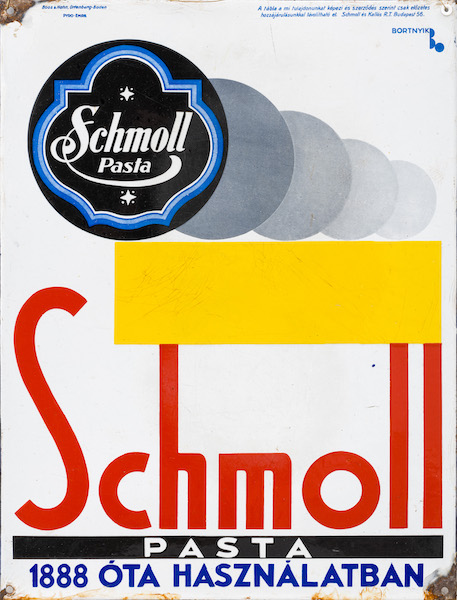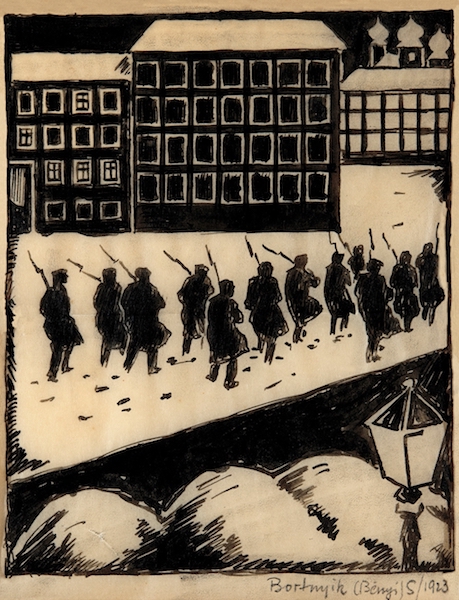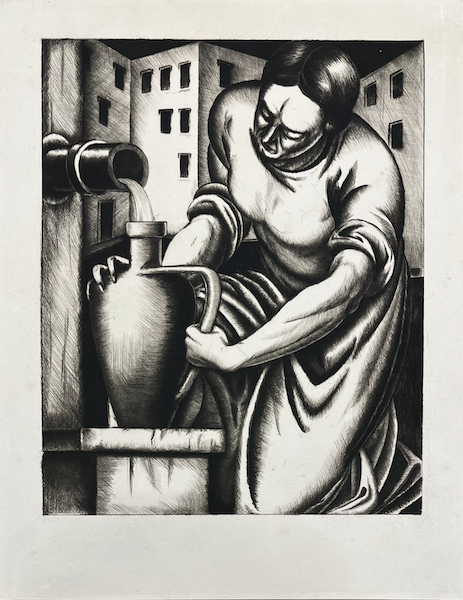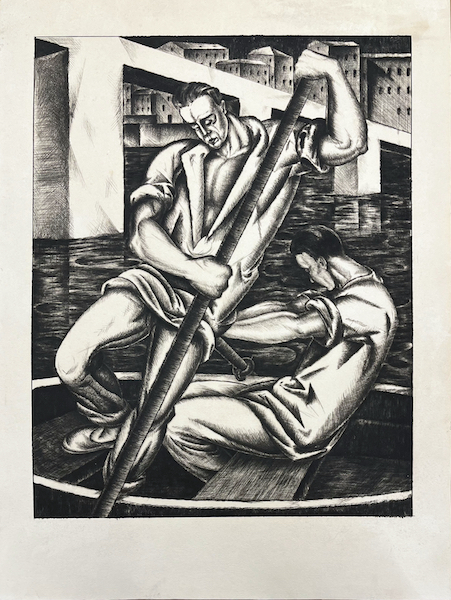Biography
Sándor Bortnyik was born in 1893 in Marosvásárhely. He was already involved in advertising graphics at a young age, in 1910 he created his first poster for the Remény Bazaar, thanks to the success of which the Savoly perfume company invited him to work in Budapest. To receive an art education, in 1913 he enrolled in the free school run by József Rippl–Rónai, Károly Kernstok, and János Vaszary. Here he met János Mattis Teutsch, who introduced him to Lajos Kassák in 1916, and here he also met Gyula Derkovits in 1918.
From 1918, he became a member of the Kassák circle, participated in the Ma collective exhibition. Later, the magazine regularly published his graphics, and even after emigrating to Vienna after the fall of the Hungarian Soviet Union in 1920, he remained a contributor to Ma. In Vienna, he mainly designed book covers and in 1921 he published his first Album with abstract stencil prints. In 1922, he broke up with Kassák and moved to Weimar, at which time he came into contact with the principles of the Bauhaus.
After returning home, in 1925-1926 he became a founding member, writer and set designer of the Zöld Szamár (Green Donkey) avant-garde theater. In 1927, he became the editor and graphic designer of the magazine Új Föld (New Earth). In 1928–1938, he opened a private graphic arts school called Műhely (Workshop), where he taught according to the principles of the Bauhaus. His students included Victor Vasarely, among others. In 1933, he published his own magazine called Plakát (Poster) and created many covers for the Dante publishing house. From 1947, he taught at the College of Applied Arts, and from that year he was the editor-in-chief of the magazine Szabad Művészet (Free Art). Between 1949-1956 he was the director general of the College of Fine Arts.
Bortnyik successfully combined the tools of futurism with elements of expressionism and cubism. He used a Cubist element in his linoleum and woodcuts, which were mainly based on black and white spot contrasts. The grotesque forms and strong emotional charge of his illustrations for the poems of Árpád Szélpál, Sándor Barta and Erzsi Újvári can be associated with German expressionist graphics. In his engraving portraits of Lenin, Liebknecht and Kassák, he combined the activist human ideal and the individualized portrait. His color dynamics led to strong compositions, his works made between 1918 and 1919 were mainly based on geometric shapes. Bortnyik used the methods of functionalist graphic design as a prolific and successful advertising graphic artist, wrapping his doubts in sarcasm in his autonomous artistic creations. In the 1930s, he painted genre pictures in a lighter, decorative style, capturing bourgeois life. Later on, he also experimented with pictures with a naturalistic theme, showing the life of city and village people, which he continued after 1945. Bortnyik remained a committed supporter of communist art policy until the end of his life.




